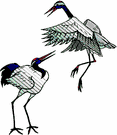Piping Plovers & Least Terns

Yesterday I also paid a visit to Blue Lake, also called Adobe Creek, north of Las Animas. This irrigation storage reservoir and the surrounding State Wildlife Area is an Audubon Society Important Bird Area because it serves as one of the few breeding locations for both Interior Least Tern and Piping Plovers in Colorado.
These federally listed species also breed on the shore of John Martin State Park and State Wildlife Area. Click here for a great brochure on these birds and the essential precautions that people, including birders, need to take so as not to endanger them. It is necessary to have at least a pair of reasonably good, 8-10 power binoculars though it is best to have a spotting scope as the birds may be 100+ feet away from the exclosure boundary.
In addition to the precautions about the staying out of the exclosures put up to protect these species, it is important that you check the area outside the exclosures where activity is allowed as these birds can't read the signs and don't know they need to stay in the exclosure areas. So watch where you drive and especially keep pets under control so they do not chase these birds (or, for that matter, any other bird or wildife species).
In point of fact, the Piping Plover in this photo was outside the exclosure. I took these photos with my 12X, 5 megapixel, digital camera and enlarged them. I did not pursue the plovers, they flew in fairly near to where I was parked in the open access area where I was using my spotting scope to look for the birds.
In addition to this plover, I viewed one appeared to be sitting on it's nest inside the exclosure as well as another Piping Plover that flew about to about 40 feet from my car. I also saw a Least Tern inside the exclosure that appeared to be on the nest as well as another one that flew to the lake. There were about 40 or so American White Pelicans, a species that is declining in Colorado, according to the Colo Division of Wildlife "Comprehensive Wildlife Conservation Strategy", on the lake.
Please remember that harassing any species on State or Federal Threatened and Endangered Species list is not only illegal but unethical. Be a Responsible Birder, do not put your recreational interest above the conservation of birds and other wildlife.
SeEtta










